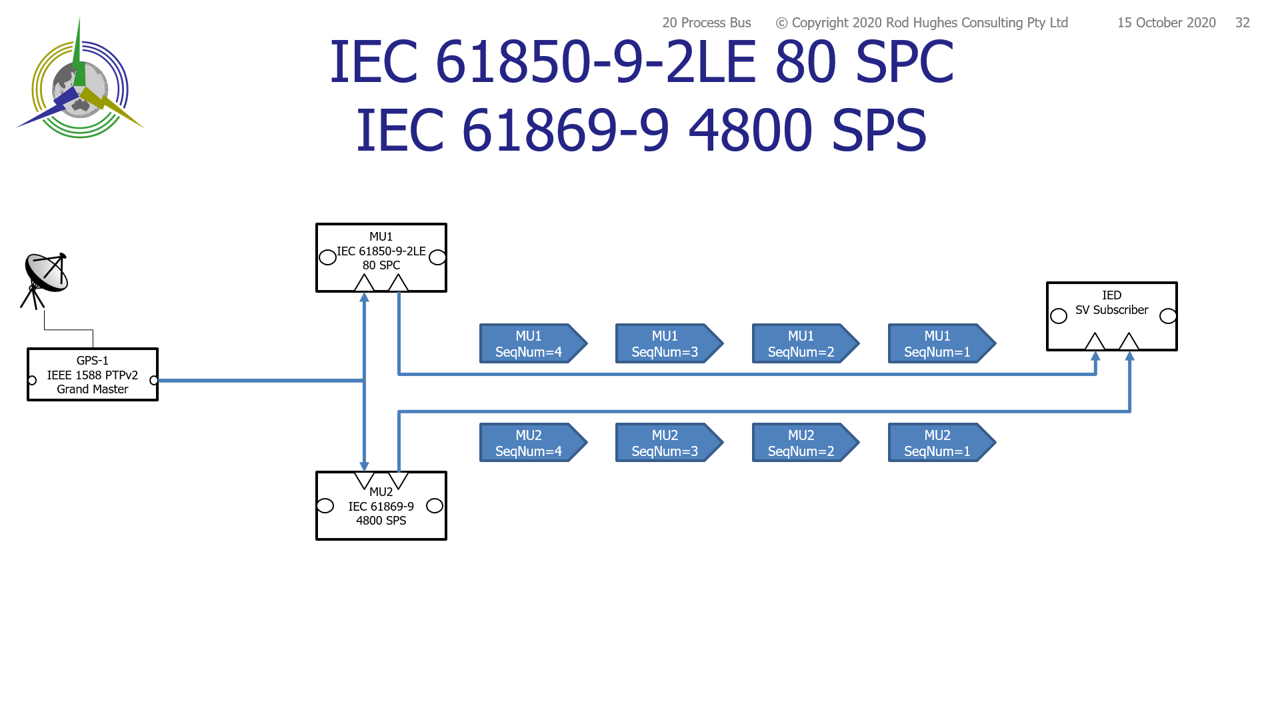For some 12 years, IEC 61869-9-2LE was the general industry solution for configuring Merging Units to publish Sampled Values for Current and Voltage measurements. It was never a "Standard", but merely a guideline document to help the industry get started with implementing Sampled Value Protection, Metering and Power Quality. It was created to provide a common set of parameters for the vendors to implement in their Merging Units. As mentioned elsewhere, the reasons for having "LE" are no longer necessary with IEC 61869-9 so "LE" is now effectively obsolete. The actual Standard for Current &/or Voltage Sampled Value Merging Units with TCTR &/or TVTR Logical Nodes is IEC 61869-9.
It was first issued in 2016.
But of course the vendors would have been aware of, and contributed to, the Standard over the preceding several years.
So you would hope by now that the vendors of Merging Units and the subscribing IEDs now support IEC 61869-9 Sampled Values. However there is no doubt a significant number of SV-publishing Merging Units and SV-subscribing IEDs in service. As new equipment is added to those installations, there is the potential for "mixed" systems: - IEC 61850-9-2LE MUs with IEC 61850-9-2LE subscribers
- IEC 61850-9-2LE MUs with IEC 61869-9 subscribers
- IEC 61850-9-2LE MUs for some measurements and IEC 61869-9 MUs for others with some IEC 61850-9-2LE subscribers and some IEC 61869-9 subscribers
- IEC 61869-9 MUs with IEC 61850-9-2LE subscribers
- IEC 61869-9 MUs with IEC 61869-9 subscribers
New systems would logically be based on homogeneous IEC 61869-9 MUs and subscribers.
It would be wise to carefully consider the performance of non-homogeneous systems before putting them into service. In that respect, it is an obvious question to ask: How would a subscribing IED perform with the two different types of input SV streams: some IEC 61850-9-2LE and some IEC 61869-9? The subscribing IED works on the basis of the SeqNum contained in the SV message, i.e. it assumes that a message from two different sources with the same SeqNum were samples taken at the exact same instant in time.
Every 1-second, all the MUs are synchronised to start their 1-second window with SeqNum = 1.
Hence it is critical to have all MUs be COHERENTLY synchronised to start their 1-second window at the same instant, ±1 µs.
SeqNum increments at the sampling rate until the start of the next 1-second window. IEC 61850-9-2LE samples at 80 Samples Per Cycle (or 256 SPC) .. which obviously varies with 50 or 60 Hz and indeed the actual system frequency at any instant.
At exactly 50 Hz, 80 SPC = 4000 Samples Per Second and 256 SPC = 12800 SPS,
At exactly 60 Hz, 80 SPC = 4800 SPS and 256 SPC = 15360 SPS ,
IEC 61869-9 samples at 4800 Samples Per Second (or 14400 SPS) which is constant regardless of frequency. So if the two MU sources are synchronised to start their sampling window at the same instant, but sampling at different rates, how does the subscribing IEDs "see" the waveforms represented by the same SeqNum assuming they were taken at the same instant. Naturally the r.m.s. values are the same, but the derived frequency and the phase angles can be significantly different. 
At exactly 60 Hz the 80 SPC and 4800 SPS are the same sampling points in time, so we do not expect any differences. The images in this section show this to be the case. However at 50 Hz, the sampling points in time will vary, i.e. sample #"2345" from one MU will represent a different point in time of the other MU. This is evident very quickly in less than half a cycle, with full anti-phase being evident in just three cycles.
Clearly if the two SV streams are supposed to represent the same current waveform, or the same voltage waveform, or a mix, very quickly the protection function is bound to mal-operate, or the metering functions provide incorrect recordings.
Therefore the problem would be immediately self-evident when commissioning protection systems that subscribe to two different MU streams (current summation, current differential, impedance, power, phase angle, voltage synch check, ...) with Pxxx and Rxxx Logical Nodes , but could well go unnoticed if there was only measurement and metering MMXU, MHIA, MSQI, MMTR, MMTN, MHAN Logical Nodes subscribing. The power quality SPC sampling rates for 50 Hz as 12800 SPS and 60 Hz as 15360 SPS do not match the new IEC 61869 14400 SPS, so they both quickly diverge, one leading and one lagging IEC 618869-9.
The following charts are the same number of Sample Value messages as above for consistency, although they are all representing pure 50 or 60 Hz waveforms, i.e. faster sampling means that a certain number of sample represents fewer cycles of waveform.
|